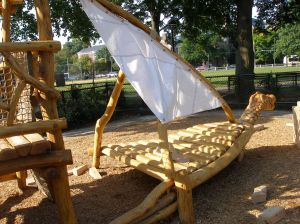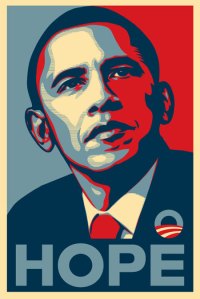New Cambridge Playground Opens
 At long last, the new Alexander Kemp Playground on the Cambridge Common is open!
At long last, the new Alexander Kemp Playground on the Cambridge Common is open!
It’s the most unusual playground I’ve ever seen–with a dragon boat, water games, a group swing, gardens, natural woods, covered areas, its own hill, a “fantasy area,” and sand everywhere. “It’s like one big sandbox,” my friend Edie commented. Parents will be happy to know that it even has a shower–modernistic, with gracefully intertwining curvy pipes–to clean off kids’hands and feet.
The playground was designed, says Parks Supervisor Kelly Write (and city documents) to foster play as a “formative learning experience in which children exercise their bodies and minds, develop motor skills, strength and fitness, creativity, social skills, a sense of discovery, and an understanding of the outdoor environment. ”
To me, it just looks like fun.
The playground was funded by the MA Executive Office of Energy and Environmental Affairs and the family of Alexander Kemp, a boy who passed away at an early age but “loved to play,” according to a plaque erected just outside Kemp’s elegant gate.
Since it opened a few days ago, it’s been incredibly crowded with parents and their kids…So, clearly, I’ll have to wait ’til evening to picnic at the large table there, with friends.
I’d much like to know who designed this magical place. And also: when are they going to take down the “no parking” signs that have made it even more difficult than usual the neighbors (me!) to find a spot?
More information about this and other Cambridge parks and playgrounds is available from the Community Development Website.
–Anita M. Harris
New Cambridge Observer is a publication of the Harris Communications Group of Cambridge, MA–as is HarrisCom Blog.
